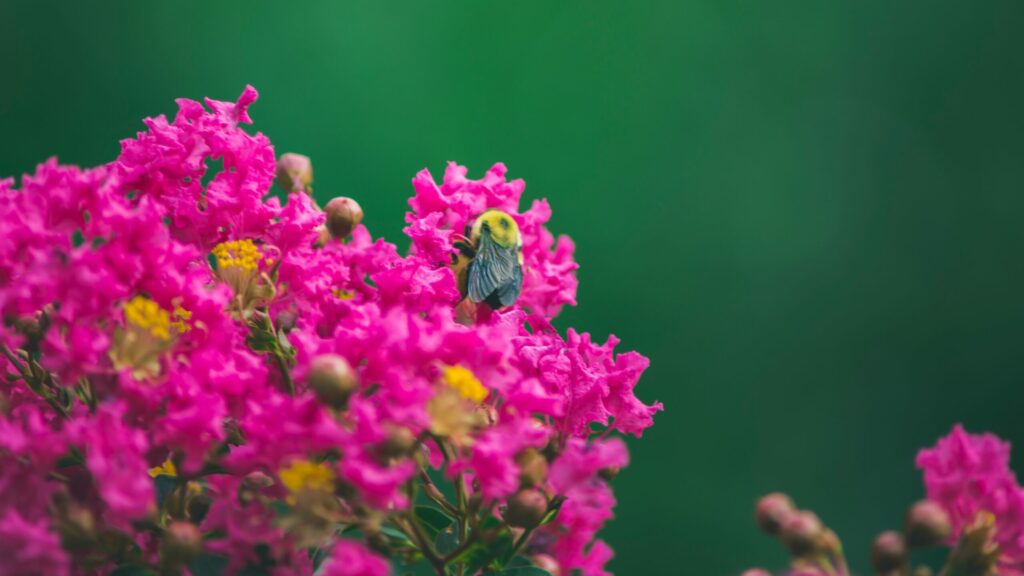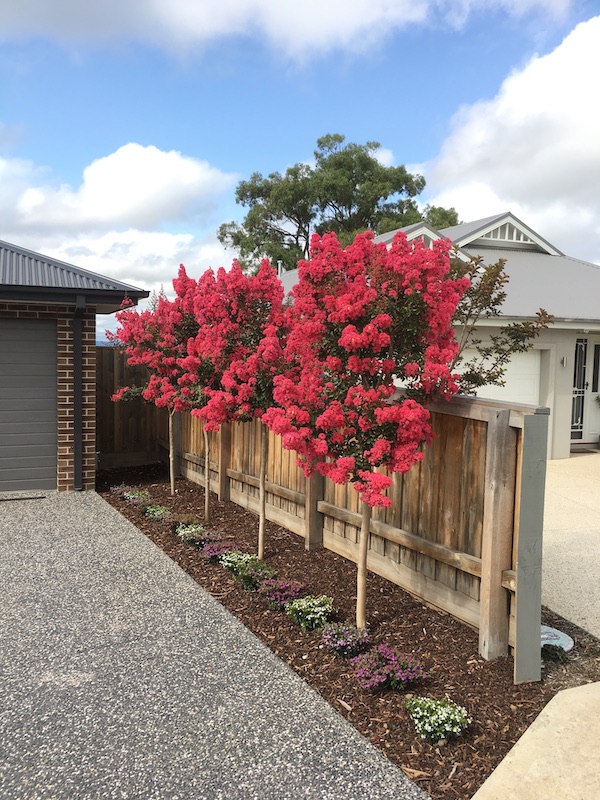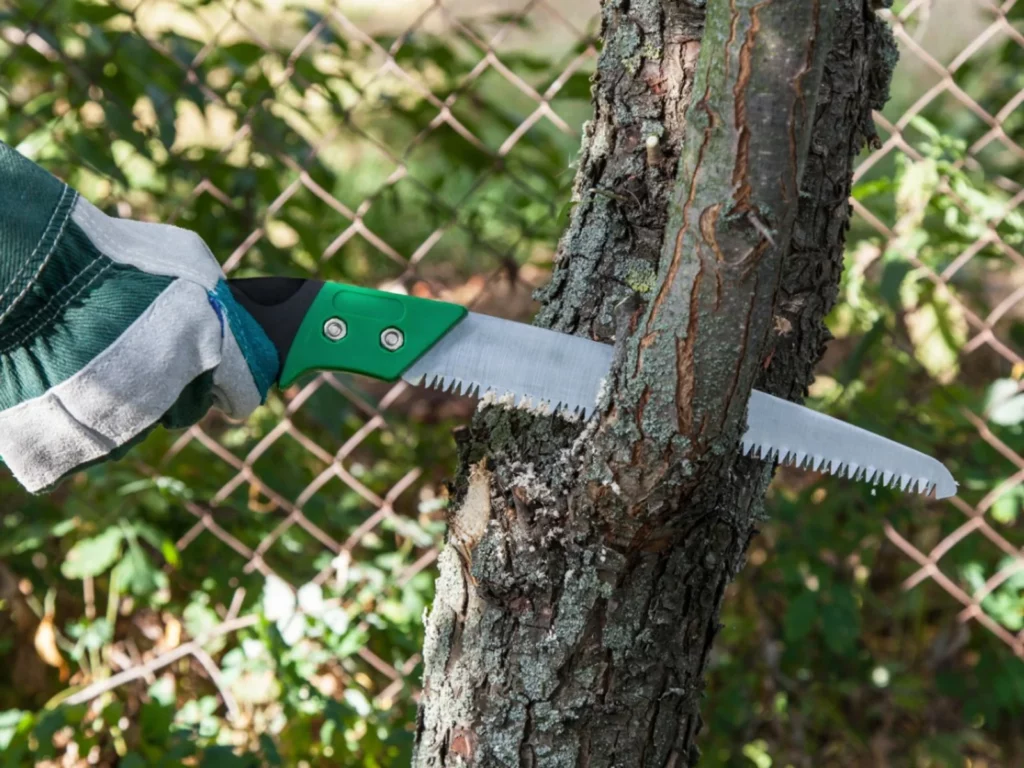
Crapemyrtle trees are commonly cultivated as small trees featuring three to five trunks, which are pruned to eliminate small limbs on the lower portion of the tree, up to two-thirds of its height. Periodic thinning of limbs is recommended to promote new growth and blooming, but it is important to prune only those limbs that are less than the width of a pencil. During the early stages of growth, it is advisable to prune the tips of small limbs that meet the same criteria. As the tree matures, pruning the top becomes increasingly challenging and hazardous, and is generally unnecessary. Attached herewith are a few images illustrating proper and improper pruning techniques.
In this article, we will cover the basics of pruning a crepe myrtle and provide some tips and tricks to help you get the job done right. We’ll explain when and why to prune your crepe myrtle and some of the best pruning techniques. With good knowledge, you’ll soon be pruning your crepe myrtle like a pro. So, let’s get started and learn how to prune crepe myrtle!
How to prune Crepe Myrtles?
Once an appropriate time to prune your crepe myrtle bush has rolled around, and you have your tools ready, get straight to it! Here is a step-by-step guide to follow.
- Remove any dead, diseased, or broken branches. That will help keep the plant healthy and avoid any potential problems down the line. Once you have removed unhealthy growth, you can start to shape the tree with selective pruning.
- Start at the bottom and decide which trunks to keep. Crepe myrtles naturally grow several trunks, which can make them appear crowded and messy. Prune the ones you don’t want to keep – do it as close to the soil as possible.
- Remove any suckers. Suckers are branches that grow from the base of the crepe myrtles.
- Prune the lower branches. Towards the bottom of the crepe myrtles, you’ll want to prune the lower branches – this will help the crepe myrtles look more attractive and draw attention to the top.
- Add any finishing touches. Take care to remove only the branches that will help you achieve the desired shape, and try not to remove too much of the canopy at once.
What should you avoid when pruning Crepe Myrtles?
Properly pruning a crepe myrtle is essential for the plant’s health and beauty. However, many people make the mistake of pruning crepe myrtle incorrectly, which can lead to dying branches, weak growth, and an unsightly, awkward shape.
The biggest and most common mistake people make is cutting off the top of crepe myrtle trees. You want to avoid the crepe murder look. Drastically pruned crepe myrtles result in trees with several large platforms and no foliage.
It is important to remember that crepe myrtles flower in the current season’s growth. Pruning too much will reduce the number of flowers and buds, resulting in fewer blooms. And it’s also important to avoid pruning the crepe myrtle too often. Pruning more than a few times a year can be too much and reduce blooms even more. If a crepe myrtle needs to be pruned, choose one or two times of the year and stick with that schedule.
What tools do you need to prune Crepe Myrtle?
You will need to following tools described below.
- Pruning shears are used for small and detailed cuts. Those small tools do wonders on small branches but can’t handle thicker ones.
- Loppers are a tool similar to hand pruners but used on thicker branches.
- Use gloves to protect your hands from sharp tools and rough foliage.
- Consider additional safety gear such as non-slip footwear and safety glasses when working with big azaleas.
When should you prune Crepe Myrtles?
Next, consider the timing of your pruning. The best time to prune your crepe myrtle is in late winter or early spring before the tree begins to flower. Late February is perfect to avoid winter injury to your tree and to give the tree time to regrow and produce a healthy bloom in the summer.
Why should you prune Crepe Myrtles?
First, pruning Crepe Myrtles allows for better air circulation throughout the plant. That helps to increase the plant’s overall health and allows for better growth. Branches too close together can create an environment where fungal diseases can form. Pruning away these branches can help to prevent this.
Second, pruning your Crepe Myrtle helps to promote flowering. Pruning the stem tips of the flower helps to encourage the production of new buds and flowers on the plant. That can create more vibrant and colorful blooms that last longer.
Third, pruning Crepe Myrtles helps to shape the plant and keep it looking tidy. It can also help to stop the growth of branches that are too close to the ground, helping to keep them from dragging on the ground and becoming damaged.
And finally, pruning your Crepe Myrtle helps to maintain the health and strength of the plant. Removing diseased or broken branches helps avoid the spread of any diseases to healthy parts of the plant. Regular pruning ensures that your Crepe Myrtle will continue to thrive and bring beauty to your landscape.

What to know before you prune your Crepe Myrtle?
Ready to start pruning your crepe myrtle? Before you prune crepe myrtles, it is crucial to understand a few basic principles.
First, as we just mentioned, timing is a factor to keep in mind when trimming your crepe myrtle trees. So, don’t start your pruning project in the middle of summer or fall.
Pruning is not only done to promote the healthy growth of a plant but is also an aesthetic choice. So before you start chopping off your crepe myrtle, determine your desired shape and size for your tree. That will help you decide which branches to prune and which to keep.
Next, always use the right tools when pruning your crepe myrtle. Whether you’re using hand pruners or a saw, make sure they are clean and sharp. Dull tools can cause damage to the bark and can leave jagged edges that can be more prone to infection. Don’t forget to disinfect your tools after each use!
